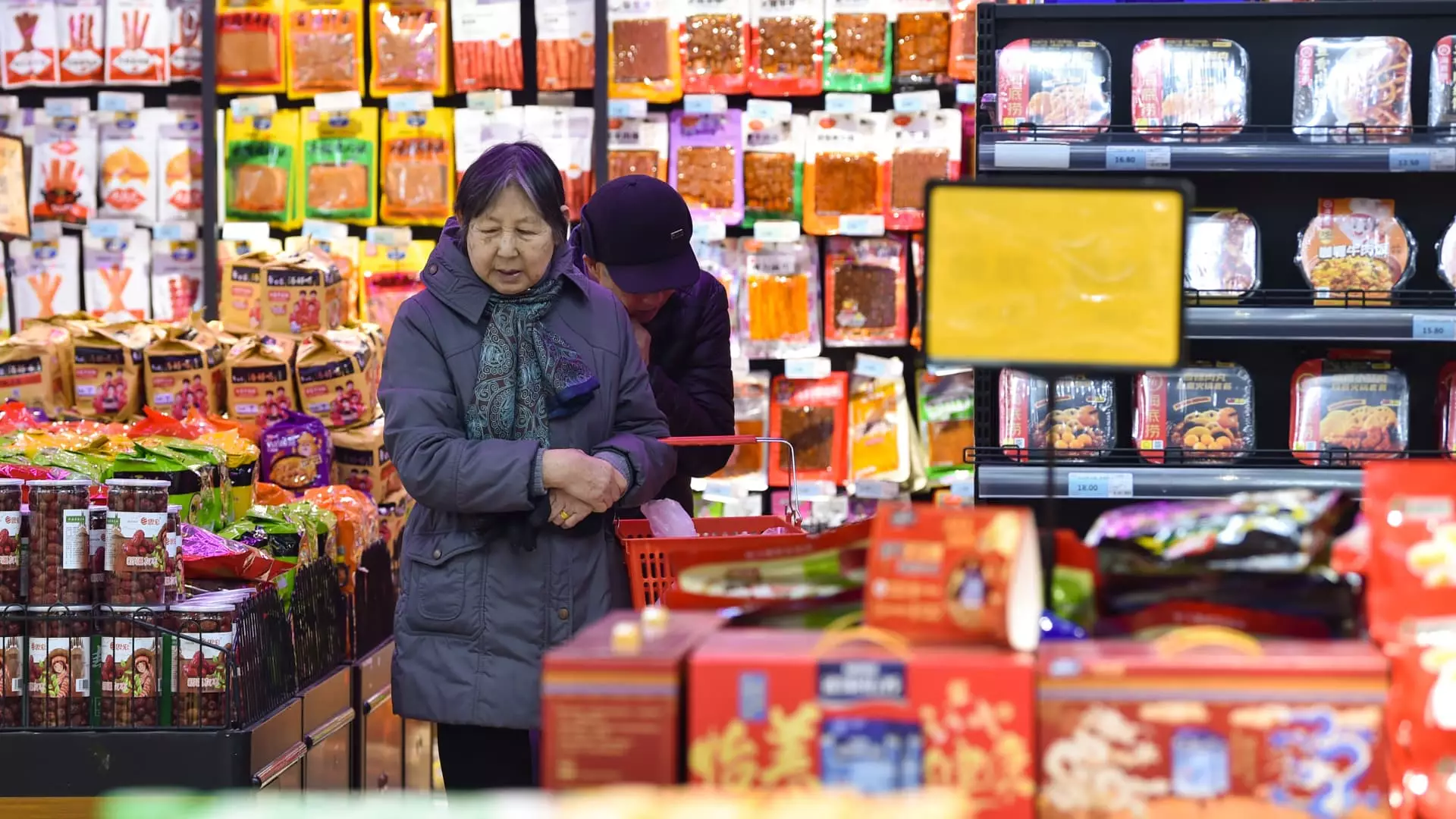In January 2023, China’s economic indicators revealed a complex and somewhat contradictory landscape characterized by rising consumer prices but persistent deflation in producer prices. According to data released by the National Bureau of Statistics, the consumer price index (CPI) rose by 0.5% year-over-year in January, a notable increase from the mere 0.1% hike seen in December 2022. This uptick surpassed the analyst consensus of a 0.4% increase, indicating a certain resilience in consumer demand amidst broader economic challenges. Yet, even as consumer inflation quickened, the landscape for producers remained bleak, with factory gate prices failing to escape the grip of deflation for the 28th consecutive month.
This juxtaposition highlights the uneven nature of economic recovery in China, where growth in consumer spending is not mirrored by the health of manufacturing or industrial sectors. Analysts suggest that the deflationary pressures facing producers are unlikely to dissipate unless policymakers can successfully stimulate domestic demand. This is a pressing issue given the backdrop of US tariffs imposed during Donald Trump’s presidency, which continue to exert pressure on exports and by extension, could jeopardize growth.
Further complicating the narrative of inflation is the impact of seasonal factors, particularly the timing of the Lunar New Year. The celebrations began in January this year, as opposed to February in 2022, resulting in increased consumer spending in preparation for family gatherings and celebrations. Seasonal spikes in prices are typical during this time, especially for consumer goods like food and travel. For example, airline ticket prices surged by 8.9% compared to a year earlier, reflecting heightened demand. However, consumer behavior remains nuanced; while spending on leisure activities, such as dining and travel, saw some boosts, the overall increase in per capita holiday spending was a modest 1.2%. This contrasts sharply with the far more robust 9.4% growth in 2022, underscoring the cautious outlook many consumers now possess regarding their financial situation.
Such guarded consumer sentiments signal a troubling trend, particularly as concerns around job security and wage stagnation continue to loom large over the economic landscape. As noted by economists at ANZ, the lukewarm response from consumers during the recent holiday highlights the fragility of the recovery process.
The current state of China’s economy poses significant challenges for policymakers. The government’s failure to meet inflation targets—marking the 13th consecutive year of missed goals—has prompted various provinces to set conservative growth targets for 2025. These targets, averaging below 3%, suggest that local governments are bracing for continued economic pressures, reflecting a pragmatic approach to upcoming fiscal challenges.
Moreover, despite pressures on consumer prices, producer prices have persistently declined, with a notable 2.3% drop in January, deeper than the anticipated 2.1% fall. Such sustained deflation signals deeper issues within manufacturing, including overcapacity, and casts doubt on whether the sector can rebound without intervention. Consequently, calls for more economic stimulus have become increasingly urgent, particularly as the services sector also shows signs of weakness.
Analysts largely expect the Chinese government to maintain its growth forecast of around 5% for the year but acknowledge that external factors such as renewed US tariffs will strain the already fragile export market, which had been one of the few bright spots amidst economic gloom in the previous year.
China’s economic outlook for 2023 is characterized by competing forces—accelerating consumer inflation juxtaposed against protracted producer price deflation. While festive spending has offered a glimmer of hope, underlying economic vulnerabilities persist, demanding a comprehensive response from policymakers. As China navigates this intricate economic landscape, the need for strategic stimulation of domestic demand and proactive measures to support the manufacturing sector remains critical. The task ahead is undoubtedly complex, but understanding and addressing these mixed signals will be pivotal as the country seeks to stabilize and rejuvenate its economy in the face of both domestic and international challenges.


Leave a Reply